YANGON—A new permanent exhibition documenting moments of Yangon’s cultural heritage opened at the Yangon Heritage Trust (YHT) exhibition space in downtown Yangon on Saturday. The exhibition, “Found: Our Heritage, Our Future”, is a collaboration involving artwork by artist Htein Lin and a collection of artefacts by architect Aung Soe Myint. It encourages viewers not only to observe, but also to contribute through a social media campaign.
With this exhibition, the YHT hopes to ignite an interest in discovering and telling stories that have meaning for the city’s residents and their families, the exhibition catalogue says.
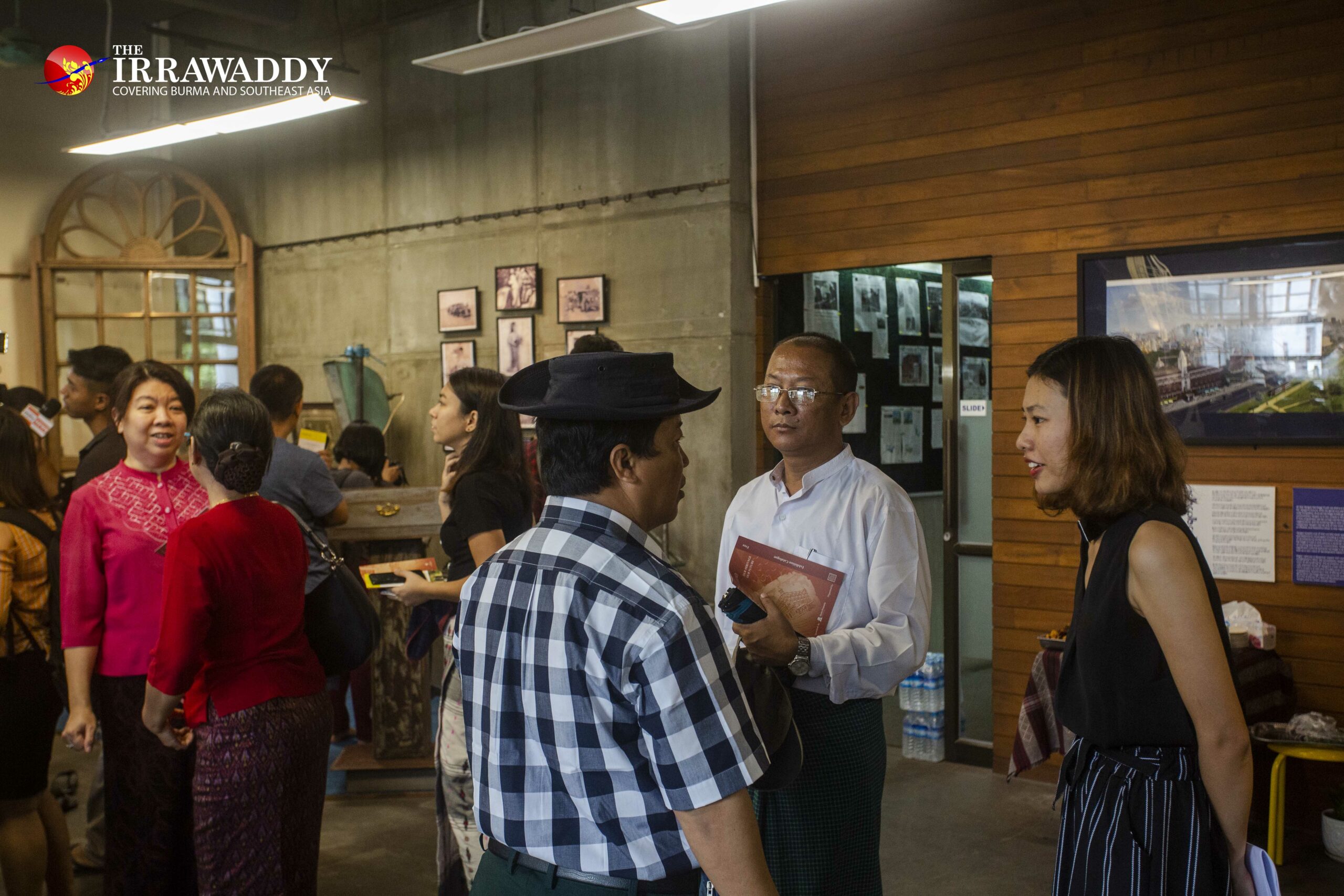
“At this moment in Yangon’s history, with rapid urbanization, globalization and huge economic and social changes taking place, it is vital that the memories that weave a patchwork of culture and meaning across Yangon and across generations, are retained and celebrated,” it says.
YHT wants to use the exhibition to highlight the pressing issue of the rate at which irreplaceable heritage buildings in Yangon are being demolished to make way for modern constructions.
When renowned architect and collector Aung Soe Myint was invited to collaborate on the exhibition, he saw an opportunity to show the public part of a large collection of memorabilia he has been hoarding since his childhood.
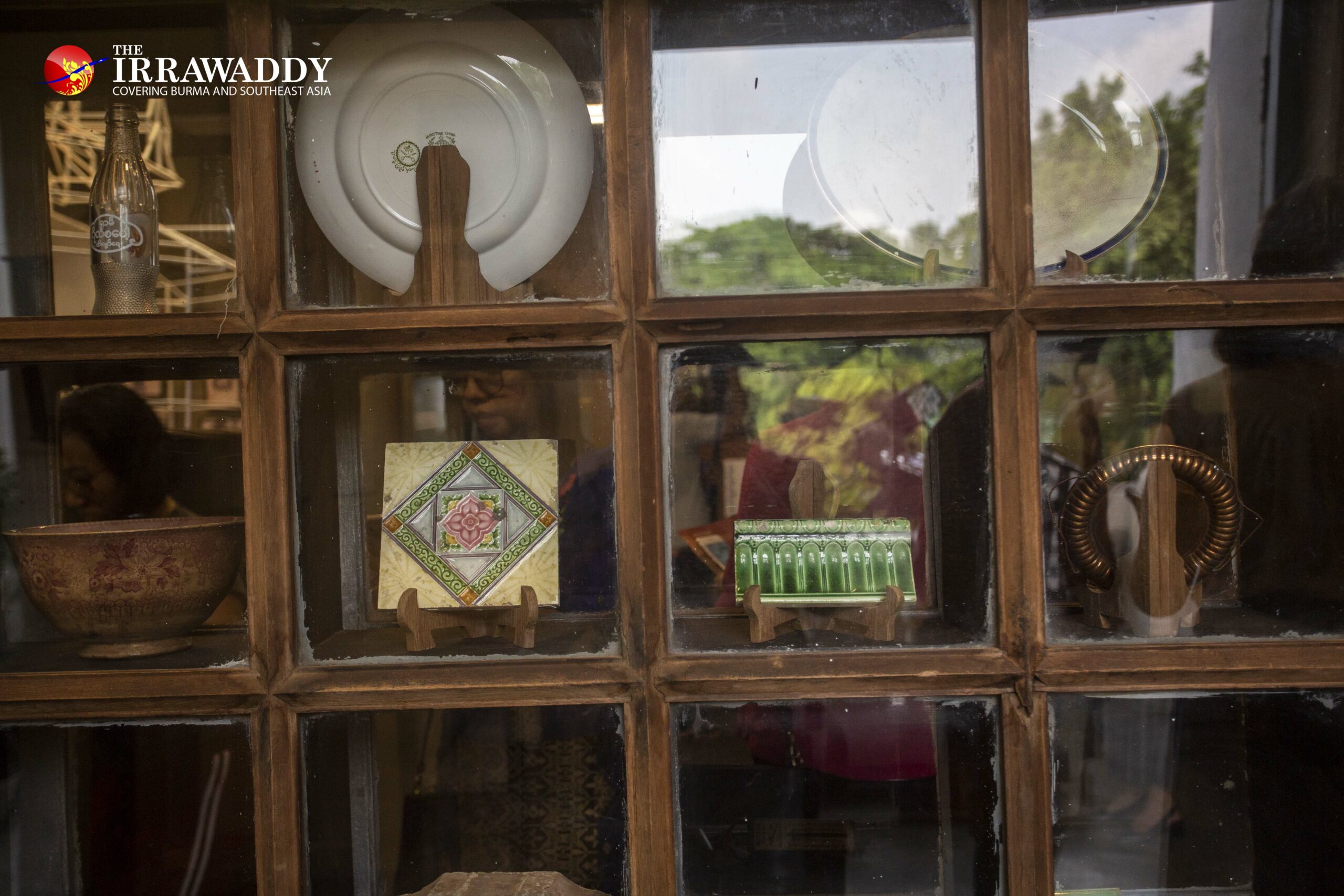
“I love to collect, not only antiques, but all memorabilia. Since I was young I collected everything—even buttons from an Australian phone or [the uniform of a] Japanese force soldier,” said Aung Soe Myint.
This exhibition recalls Yangon’s multicultural and vibrant social life during the late 19th and early 20th centuries. There’s branded crockery, a Burmese-font Olympia typewriter, a transistor radio and a film camera among everyday objects from a bygone era. Black-and-white photographs show hand-painted shop signs overhanging a street of old-world cars in downtown Yangon.
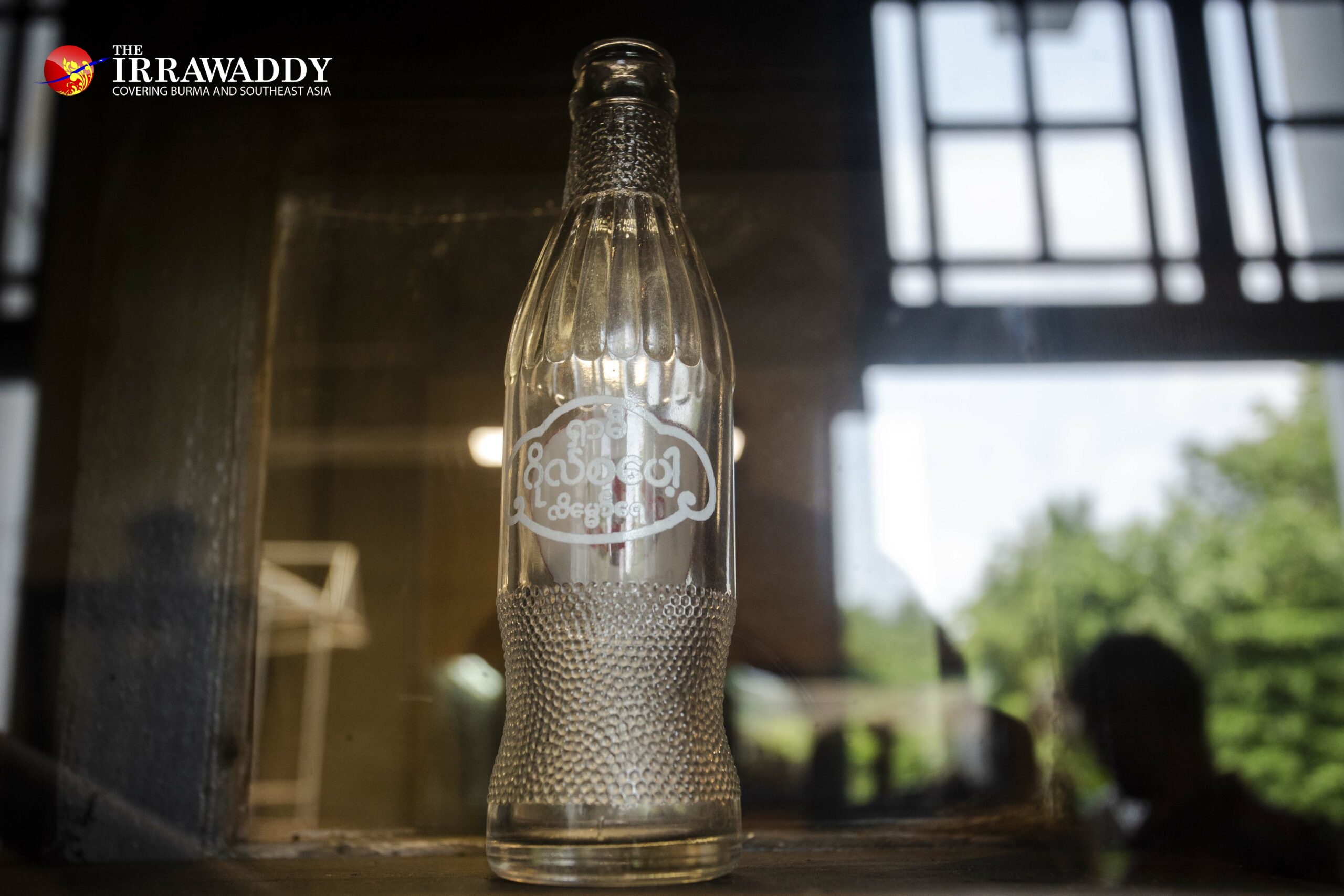
An A. Scott & Co Rangoon soda bottle is displayed in a recycled cabinet alongside an official plate from the Sunni Muslim Community Club, tiles from famous buildings that have been demolished. Also part of the show are two cinema seats which Aung Soe Myint saved from being discarded from the Myoma/Shwe Gon theater on Bogyoke Aung San Road, which was once part of Yangon’s famed Cinema Row and demolished in 2012.
Large parts of the display units are made from parts of demolished buildings too—door panels are now detached and have been reused as mounts for the photographs; a door frame has been reinvented as a lamppost supporting an antique gas street light. Many of the artefacts are over a century old.
In a darkened room, “Fallen Petals Rise Back to the Flower” is a video installation in which Aung Soe Myint has reversed time-lapse photographs which captured the deconstruction of an important historic residential building that once stood on Pyay Road. He wants to highlight the continuing issue of heritage building demolition in the city.
“I’d love to see demolished buildings back in Rangoon. As you know, Rangoon is a city with its own character, but buildings go missing day by day,” said Aung Soe Myint.
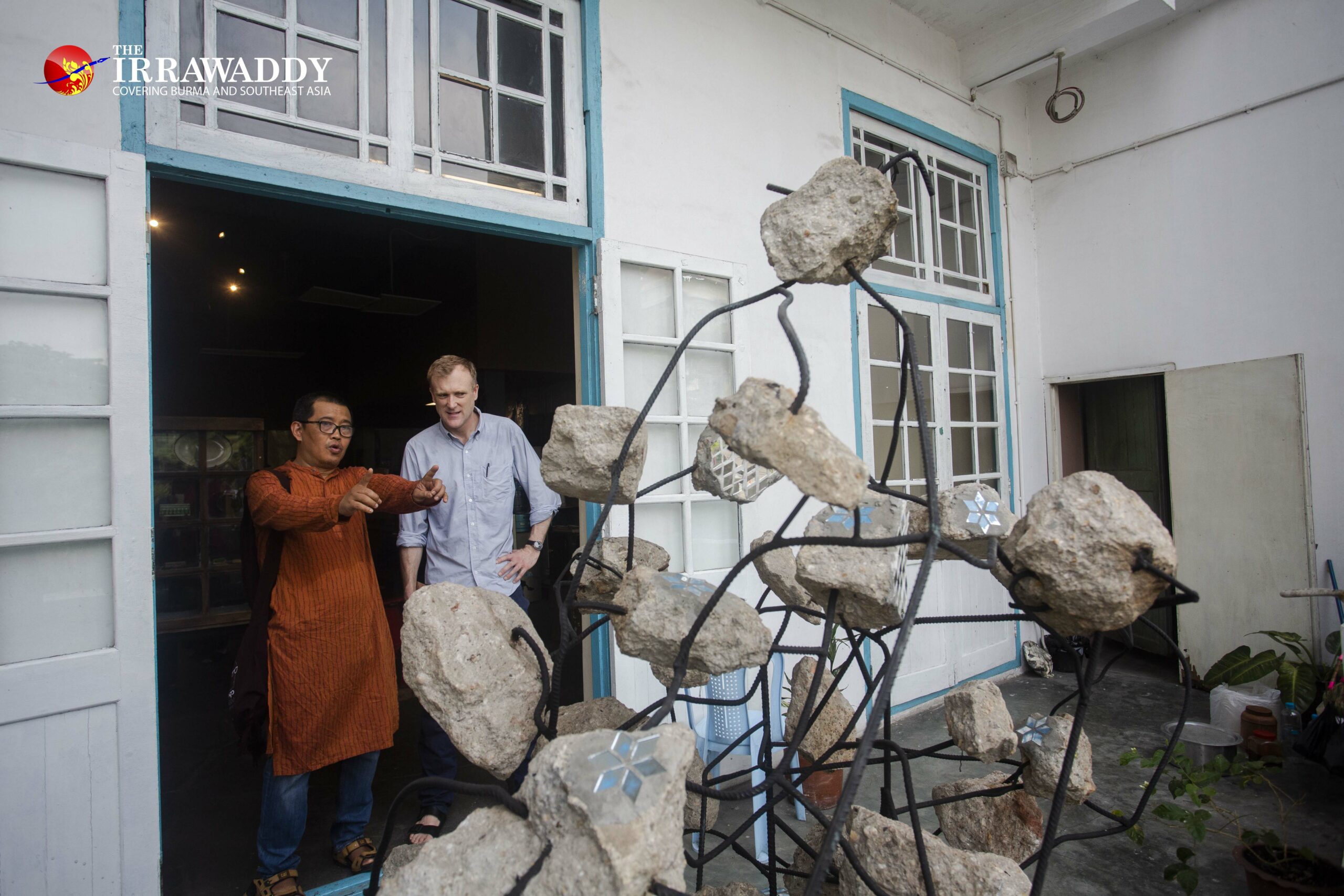
Artist Htein Lin’s “Revival” art installation is a sculpture made of parts of discarded buildings suspended above a mosaic-tile base using twisted construction steel.
“I made this piece to raise awareness that in Yangon, on a daily basis, beautiful and historic buildings are demolished to make way for cheap and ugly new buildings,” the artwork information card reads.
For the community’s involvement through a social media challenge, YHT is calling for local residents to “delve into their own history and share stories about historic objects they might find at home.” Participants can record a video or take a photograph and explain what the object is, where it was found and why it’s important to the household, and then upload it to Facebook or Instagram using #ourheritagefound #yht #yangon.
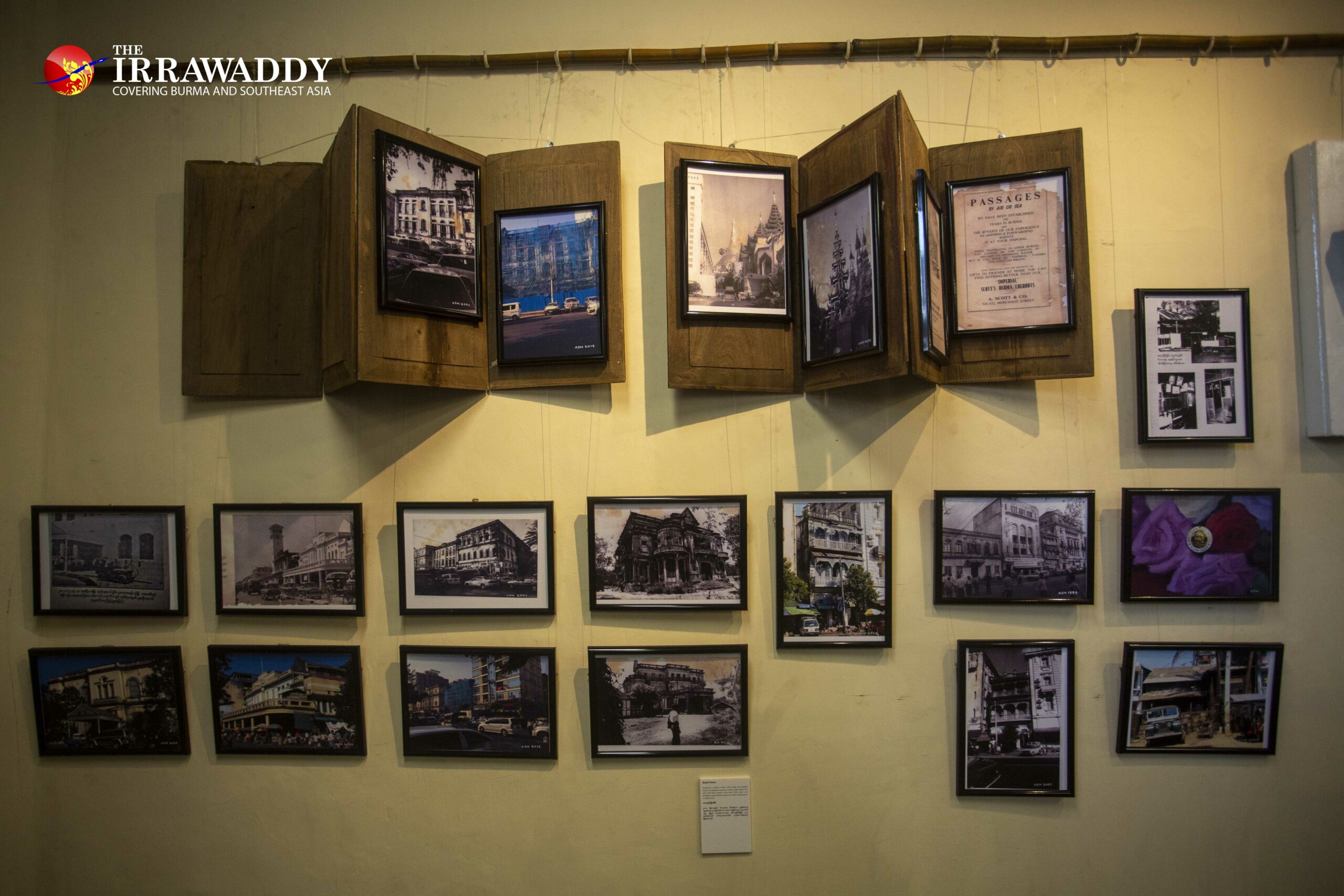
“The young people must know to distinguish between good and bad work. Here, some middle-aged people have [positions of] high authority without even having the ability to distinguish between good and bad work,” said Aung Soe Myint.
For some people viewing the exhibition, it may be a walk down memory lane tinged with nostalgia or loss. For younger viewers, it is an important history lesson. For everyone, the exhibits show the scale and speed of change Yangon has experienced in the last century and give a warning of what the city is at risk of losing in terms of its tangible heritage.

















